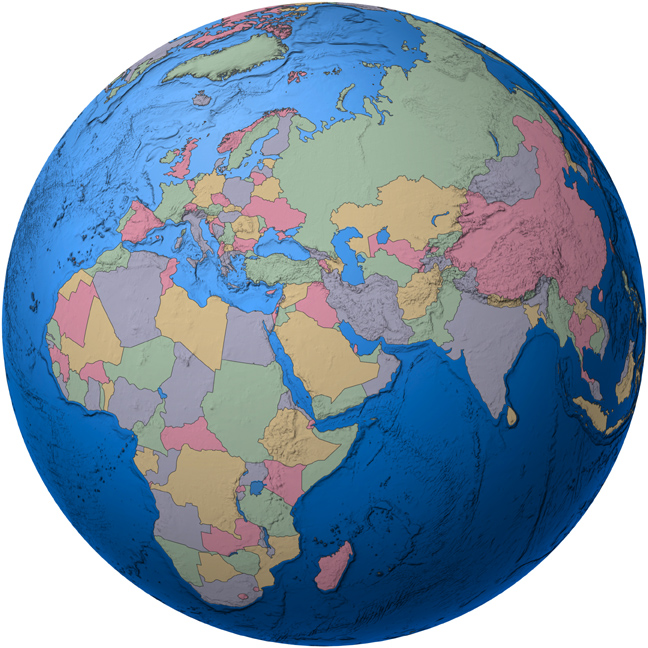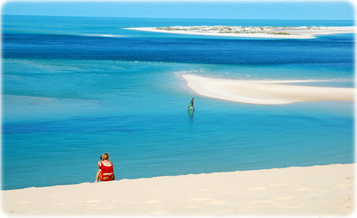
The African Continent in the Globe

Namib Desert, Namibia (NASA, 1985). The Namib Desert, for which the country of Namibia is named, is a classic example of a coastal desert along the southwestern side of a Southern Hemisphere continent. With a cold ocean current offshore, practically no natural conditions exist to produce any form of precipitation. Low, ground-hugging stratus clouds (fog) sometimes develop along the shoreline. When the fog moves onshore, it can provide the only form of moisture that parts of the Namib Desert receive for decades. This south-looking photograph shows two different physiographic provinces: a sand desert immediately adjacent to the Atlantic Ocean and a more diversified area of rocks and low hills inland. The sandy desert along the coast (known as the Skeleton Coast because it is part of the Namibia and Angola coastlines where numerous shipwrecks occurred during the last few centuries) consists of transverse dunes. A series of sand dunes parallel to one another was created by the wind blowing at right angles to the ridges. The windward (western) face has a more gentle slope, and the leeward (eastern) face tends to be steeper. The vertical distance between crest and trough can exceed 300 feet (90 meters). The entire region is so dry that no permanent watercourse flows from the higher elevations in the east to the Atlantic Ocean in the west.
Transparent physical aspect.
Beach in Bazaruto, Mozambique (© Lassara).


|
Copyright © Geographic Guide - Travel the World, African Continent. |
Namib Desert, Namibia.

